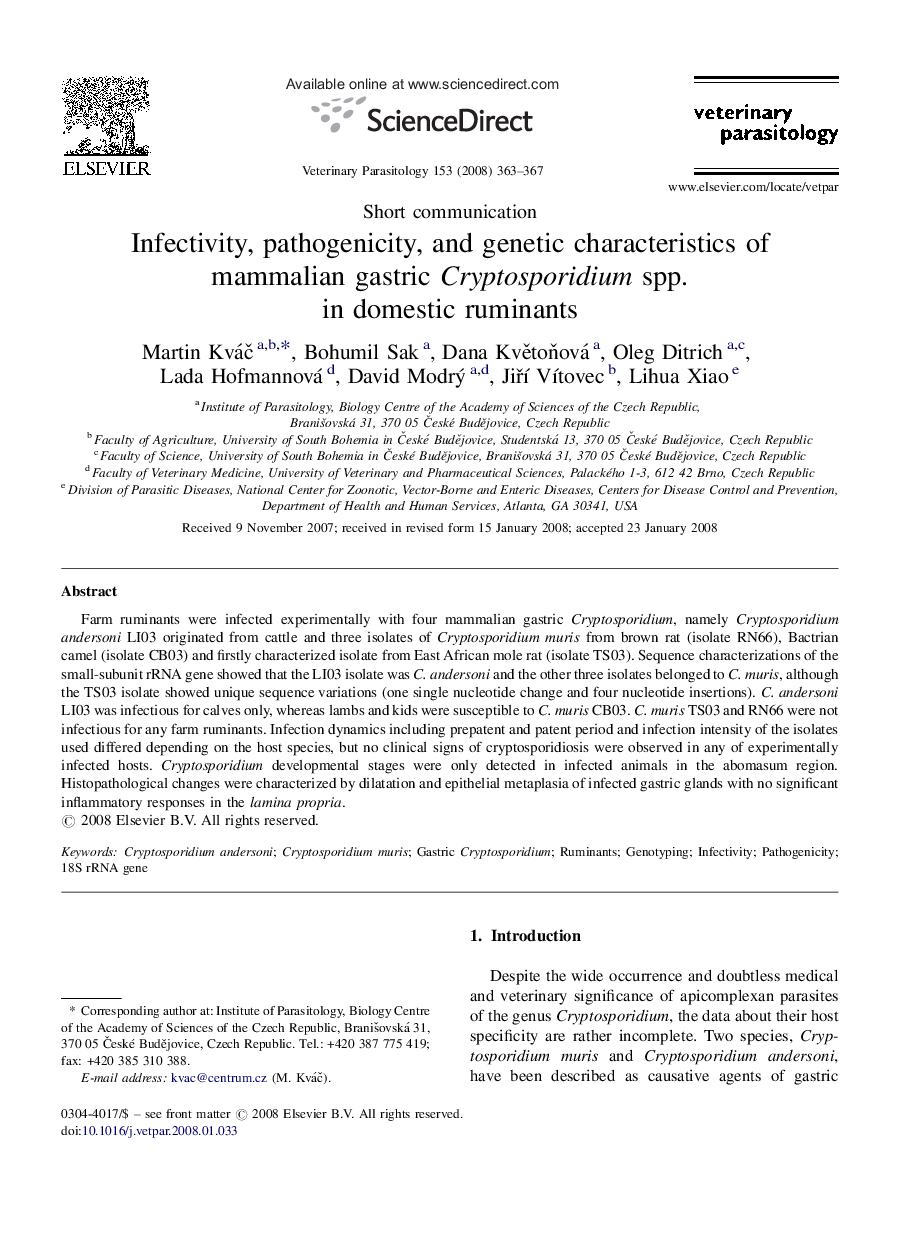| Article ID | Journal | Published Year | Pages | File Type |
|---|---|---|---|---|
| 2471724 | Veterinary Parasitology | 2008 | 5 Pages |
Farm ruminants were infected experimentally with four mammalian gastric Cryptosporidium, namely Cryptosporidium andersoni LI03 originated from cattle and three isolates of Cryptosporidium muris from brown rat (isolate RN66), Bactrian camel (isolate CB03) and firstly characterized isolate from East African mole rat (isolate TS03). Sequence characterizations of the small-subunit rRNA gene showed that the LI03 isolate was C. andersoni and the other three isolates belonged to C. muris, although the TS03 isolate showed unique sequence variations (one single nucleotide change and four nucleotide insertions). C. andersoni LI03 was infectious for calves only, whereas lambs and kids were susceptible to C. muris CB03. C. muris TS03 and RN66 were not infectious for any farm ruminants. Infection dynamics including prepatent and patent period and infection intensity of the isolates used differed depending on the host species, but no clinical signs of cryptosporidiosis were observed in any of experimentally infected hosts. Cryptosporidium developmental stages were only detected in infected animals in the abomasum region. Histopathological changes were characterized by dilatation and epithelial metaplasia of infected gastric glands with no significant inflammatory responses in the lamina propria.
